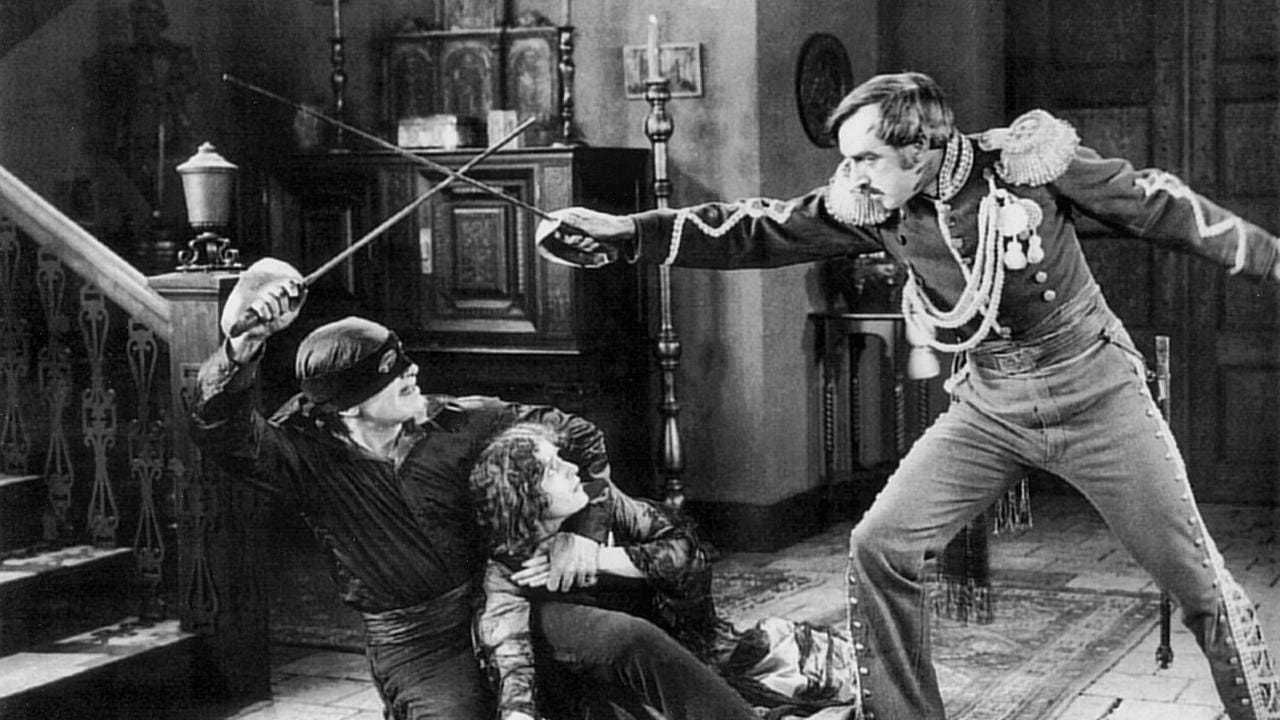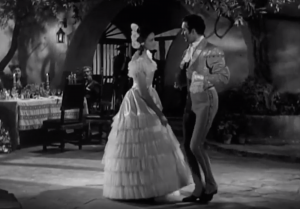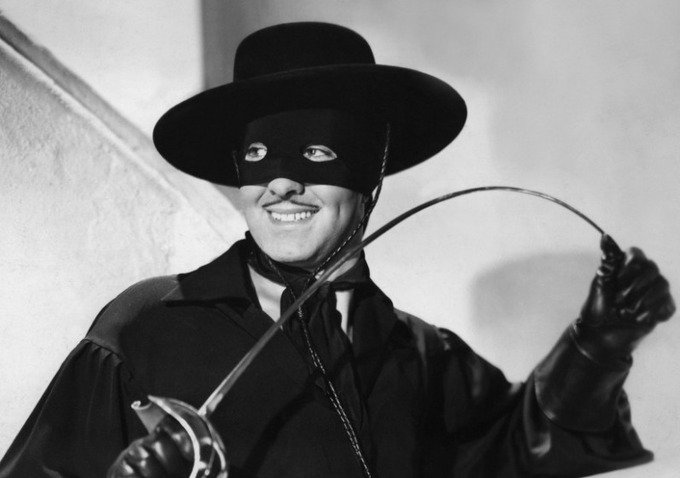Among the greatest swashbucklers of all time, the name “Zorro” will quickly enter the conversation. Numerous variations of the tale have been made, including the original iteration starring Douglas Fairbanks in 1920. Despite this, Rouben Mamoulian’s The Mark of Zorro (1940) is widely regarded as the finest depiction of the Spanish swordsman. Origins for the character were based on The Curse of Capistrano (1919) written by Johnston McCulley. With Tyrone Power starring as Zorro, Linda Darnell As Lolita Quintero, and Basil Rathbone as Captain Esteban, the film was distributed by 20th Century Fox and released November 8, 1940. Just two years prior, the immensely popular The Adventures of Robin Hood (1938) had just been released. Like it, Zorro displays virtues like courage, honor, and justice–all things American audiences needed to see as the Second World War began in Europe. Like the earlier Robin Hood, The Mark of Zorro‘s elaborate production, narrative tropes, cultural politics, and action sequences work similarly to renounce economic inequality.
The Mark of Zorro tells the tale of a young soldier returning home from Spain to find tyranny in his city. To keep his family safe and his identity hidden, he dawns a mask and works to vigilantly undo the damage done by oppressive Spaniards. Director Rouben Mamoulian was an Armenian-American filmmaker with many notable achievements including directing the first three-strip Technicolor film, Becky Sharp (1935). As mentioned earlier, Mamoulian’s iteration was a remake of the 1920 silent version starring Douglas Fairbanks. This echoes the remake of 1922’s Robin Hood, also starring Fairbanks. Mamoulian’s Zorro was a change of pace compared to his usual films of musicals and dramas, however, 20th Century Fox decided to select him to direct The Mark of Zorro. The main reason for remaking this adventure tale was to revisit a popular story that would statistically be supported by the same crowds who loved Robin Hood. As mentioned by Tasker, Brian Taves argues that the adventure genre “deals with the valiant fight for freedom and a just form of government, set in exotic locales and the historical past. This is the central theme of adventure, a motif that is unique to the genre” (Tasker 18-19). Due to its commentary on oppression and the lower class as well as the fight for freedom, The Mark of Zorro falls directly in line with his criteria for an adventure film.
Basic conflicts presented in this film are that of social and hierarchical matters. We see a corrupt mayor harshly taxing citizens while soldiers treat them like peasants. The film clearly depicts the rich as selfish people who are self absorbed in fashion and dancing. Zorro, the protagonist, stands up for the people and causes mischief for the wealthy. The values he upholds directly correlate with that of another mischievous scoundrel, Robin Hood. Both movies display economic inequalities dealt with by citizens as well as a champion who fights for them. Both films also involve a love interest and attempt to restore power back to a rightful ruler. The patterns seen in these basic plot structures help explain why The Mark of Zorro was successful so soon after the release of The Adventures of Robin Hood.

Furthermore, Zorro employs a similar pattern of conflict, chase, and confrontation as seen in Robin Hood. Both heroes put their swords to the test against the blades of the wealthy. A clear action movie trope the movie contains is that none of the soldiers Zorro faces pose any real threat to him. He cleanly dispatches them and makes it clear that he is a master swordsman. In order to counteract this “weak minion” cliche, very few scenes of combat are actually included in the film. Instead, action scenes are often substituted for character development. The first instance of Zorro actually using is blade in combat is nearly 40 minutes into the film and lasts not even five seconds from when he draws his sword.
By choosing dialogue and interactions over meaningless action, Mamoulian gives Zorro a more fleshed-out personality. His charm and charisma is reminiscent of Abu from The Thief of Bagdad (1940). This results in the fight sequences being more meaningful and important due to the rareness of them. A great example of how the film uses dialogue to add to action is when Zorro (Don Diego) introduces himself to Inez Quintero. He comes across as a gentle soft-spoken man only to use that false facade so that they don’t suspect him when he robs them later as Zorro. He sets up his “Clark Kent” alter ego which ends up creating more interesting action scenes because only the audience knows his identity. This starkly contrasts with Robin Hood, who chooses not to hide who he is or what he’s done, but instead, wears it on his sleeve.
For a tale about the differences in class and an oppressive government, the film uses very clear techniques to establish its position. When Zorro is in the presence of rich upper class members, lavish decorations and furniture are seen throughout the set. This is compiled with a wardrobe selection that matches the wealth of the various characters. These scenes contrast with moments featuring the lower class, who are dressed in basic plain attire.

Lolita and Diego dancing in the comfort of a wealthy abode.
In one scene, we are shown the duality of both sides. As the camera pans, we see the two thematic sides of the tax-collecting soldiers and the struggling citizens. As Zorro appears to save them, the camera views him at a slightly low angle, making him appear larger and more important. Zorro’s shadow looms even larger in the frame and towers over everyone thanks to clever lighting. It cuts to a high angle reaction shot of the soldiers and workers all looking up at him. He and his “Z” mark have become a symbol that is fueling a revolution of the status quo in many ways that Robin Hood and even Spartacus rally their followers. During the chase scene, we see a long continuous shot from the same angle of Zorro using his wit to eventually escape his captors. Because of this long take, it only takes an astonishing 5 shots to make up the scene between him getting on his horse to him riding off in the distance. These long shots force audiences to pay attention to the goose chase he leads them on without being distracted by a large amount of cuts during the sequence.
In 1940, The Mark of Zorro established itself as one of the most successful swashbuckler films of its time. Thanks to the previous success of The Adventures of Robin Hood, 20th Century Fox took notes from Warner Bros Pictures and decided to create their own film about a hero who fights against injustice. By focusing less on fight scenes and more on world-building, Zorro establishes real depth behind the personalities and motives of its characters. This gives action in the film a much more meaningful importance as a result. The aspects it borrows from the tale of Sherwood are the reason why The Mark of Zorro has managed to stand up as its own swashbuckler film and hold the test of time.


Trackbacks/Pingbacks